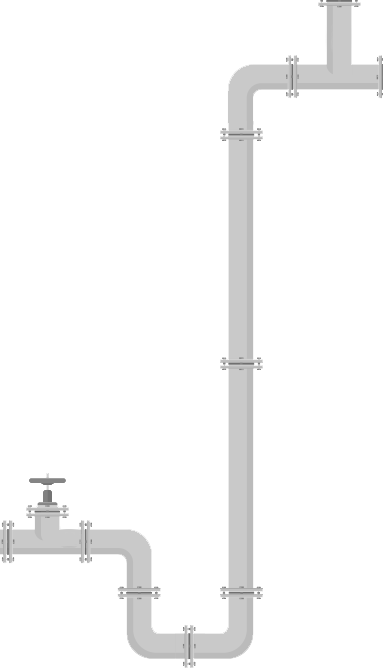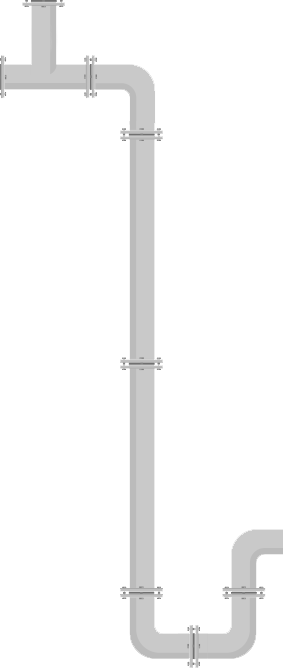8 Frequently Asked Questions About Hydro-Jetting
Posted by Jason Genah on 17-05-2024

In 1958, a brilliant mind invented a way to cut up large items using the power of water. Billie Schwacha from the United States developed a method of using high-pressure liquids to cut through metal. This led to further investigations, and water was eventually used to cut wood as a way to improve lumber production. Other applications were soon devised, and hydro-jetting was born.
However, what is hydro jetting exactly, and why should it be considered when it comes to plumbing problems or maintenance? In fact, hydro-jetting has been around for many decades and is the best solution to sewer maintenance, an area often overlooked in plumbing.
If your drains are draining slowly or there is a funky smell that you just can’t get rid of, then hydro-jetting could be the key solution, since the issue could be outside and just permeating its way back inside.
1. How does it work?
With hydro-jetting, water is put under approximately 2000-8000 psi (pounds per square inch) of pressure before being expelled at an extremely fast rate. This sudden rush and build-up of pressure can clear away any type of clog.
Its power is ideal for clearing away organic matter and tree roots from outdoor drains and sewers, where most snakes and augers can’t typically reach or have the strength to remove them properly.
A camera is typically put down the pipe first to see the clog or reason for the slow draining of water. This helps identify what and where the problem is and guides the plumber so that the hydro-jetting is the most effective.
2. Why should I get it done?
Recurring clogs or slow draining even after using a drain cleaner could indicate that the problem is deeper than first suspected or that it’s a larger clog than anticipated. While snakes are very useful, they cannot effectively tackle every situation.
As hydro-jetting is so effective at removing larger problems, it can be recommended for use every two years to help keep your sewer pipes in good working condition.
3. Will hydro jetting clear tree roots?
Hydro jet cleaning in Toronto is the best and most environmentally friendly way to clear tree roots from your drains.
Snaking—either with a long steel cable or an auger—will cut holes in the root system, only removing part of the problem and encouraging regrowth. Hydro-jetting removes all the roots in the pipe, reducing the damage to the pipes in the process.
As everything is cleared out quickly and efficiently with hydro-jetting, it’s an innovative and eco-friendly way to keep your sewers and drains healthy and lasting longer.
4. Can it damage the pipes?
Despite the immense pressure the water is under, if the pipes are new and in good condition, then hydro-jetting is safer and easier on the pipes than using harsh chemicals or augers.
Older pipes, or pipes that have been poorly maintained and therefore damaged, can be weakened or broken if the process is done incorrectly or if the issue was not known ahead of time. This is why a camera is used as part of the process to ensure that the pipes will be able to withstand the water pressure and to locate the clog.
5. Should I call a professional?
There are some companies that rent out hydro jet machines. However, not all machines are the same, and it’s always recommended to hire someone a trained professional who can navigate heavy debris, unexpected problems, and the water pressure.
Even the most seasoned DIY-er can encounter issues with equipment that they are not familiar with, and this can lead to expensive consequences. Your plumber will have the expertise to carry out the service safely and efficiently.
6. Do I need to prepare?
The plumber will find it helpful if the access to the drains has been cleared away. Things like toys, grass, weeds, and other outdoor debris should be removed from the drain area.
You don’t need to open the access and start cleaning with industrial cleaners, but the space around it should be free from hazards.
Make sure that the water to the property has been shut off, and showers and toilets are flushed before the process begins. This helps to prevent backflow and damage to the plumbing inside the property.
7. How long will it take?
Depending on the length of the sewer line and the clog that needs to be removed, the process can take approximately an hour to complete.
It will take more time if the sewer line is longer than expected or the clog is further down the line and, therefore, further away from the closest access point.
8. Can I just use a snake?
When it comes to most sewer and drain clogs, the culprit is usually grease, oil, fat, and other organic materials.
Snakes and augers are great in the home, but when it comes to the larger drains outside, hydro-jetting is the most efficient way to get the job done, both in terms of time and money.
Call Our Plumbing Experts For Hydro Jet Cleaning in Toronto
Hydro-jetting is an essential part of your plumbing care and should be carried out roughly every two years. Keeping the drains free from tree roots, organic matter, and other greasy debris will help to keep your pipes working and in good condition for longer.
Drain King Plumbers is the GTA’s answer for all plumbing needs. We can handle everything, from home plumbing issues and maintenance to larger problems such as sewer and drain care and even unexpected emergencies.
With the right tools for the job and the skill to carry out the work correctly the first time around, ours is the only number you will need to remember to make sure your home or business plumbing flows the way it should.
To book an appointment for hydro jet cleaning in Toronto, you can call us at 833-983-5663 or contact us here.




